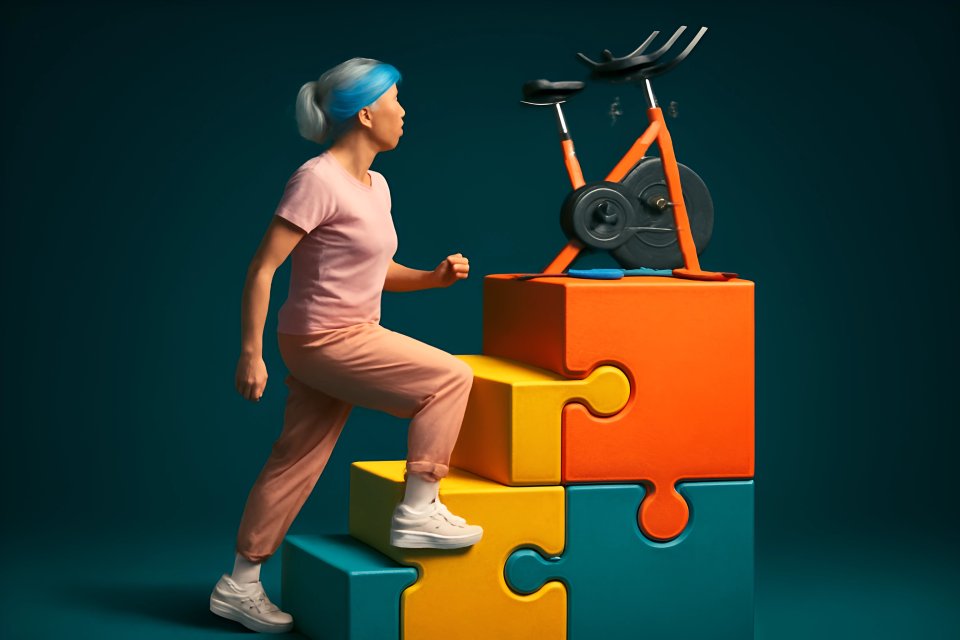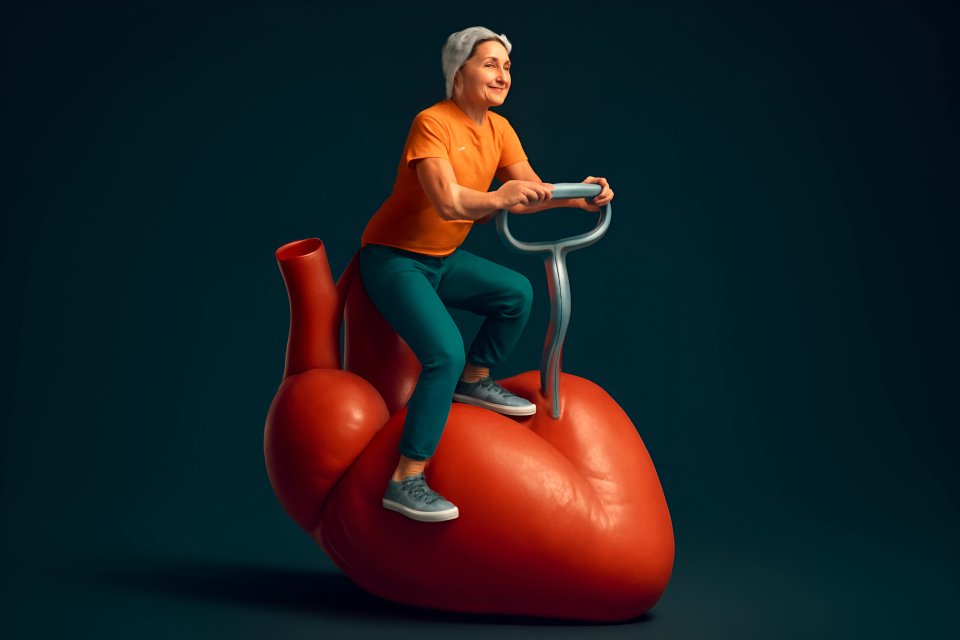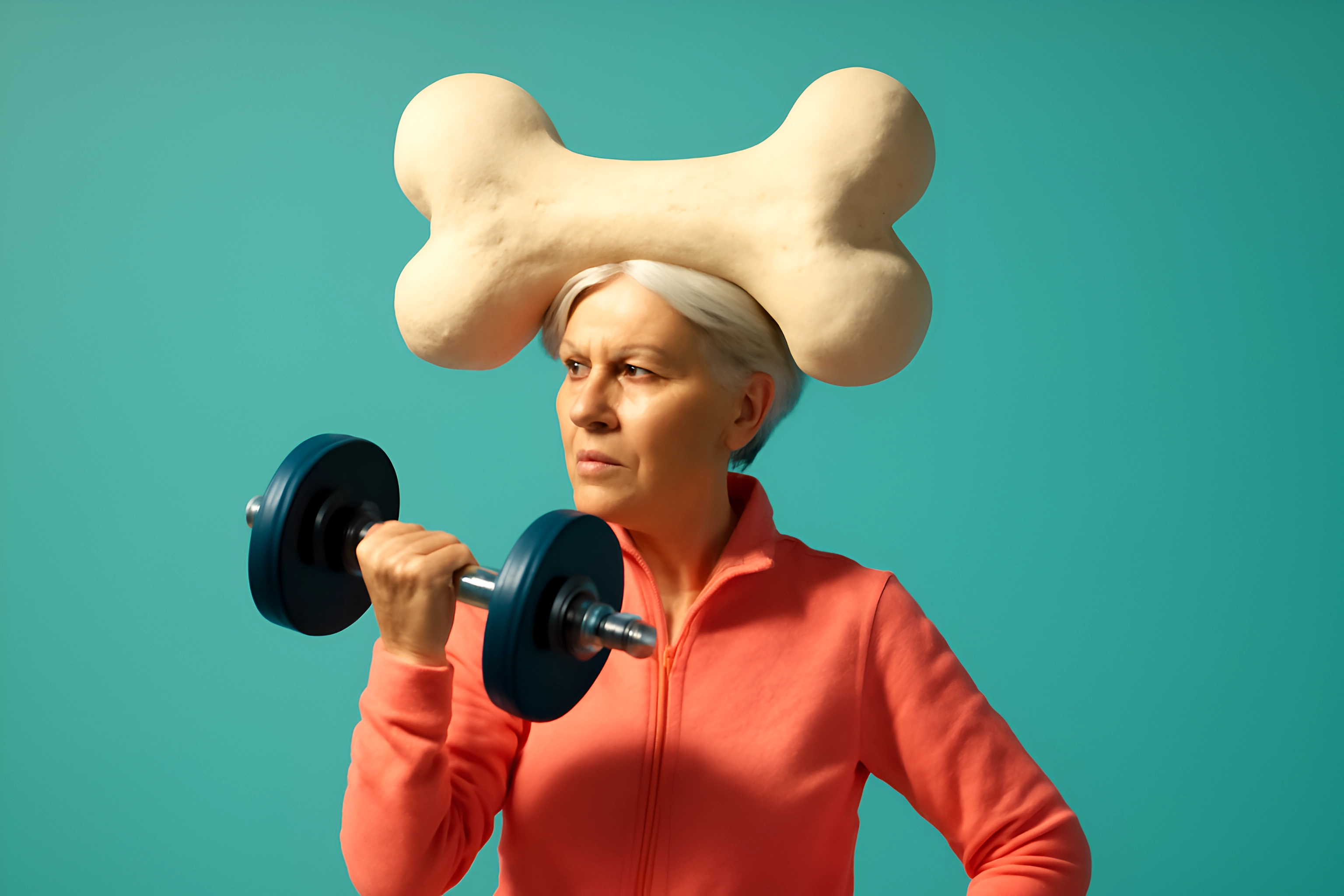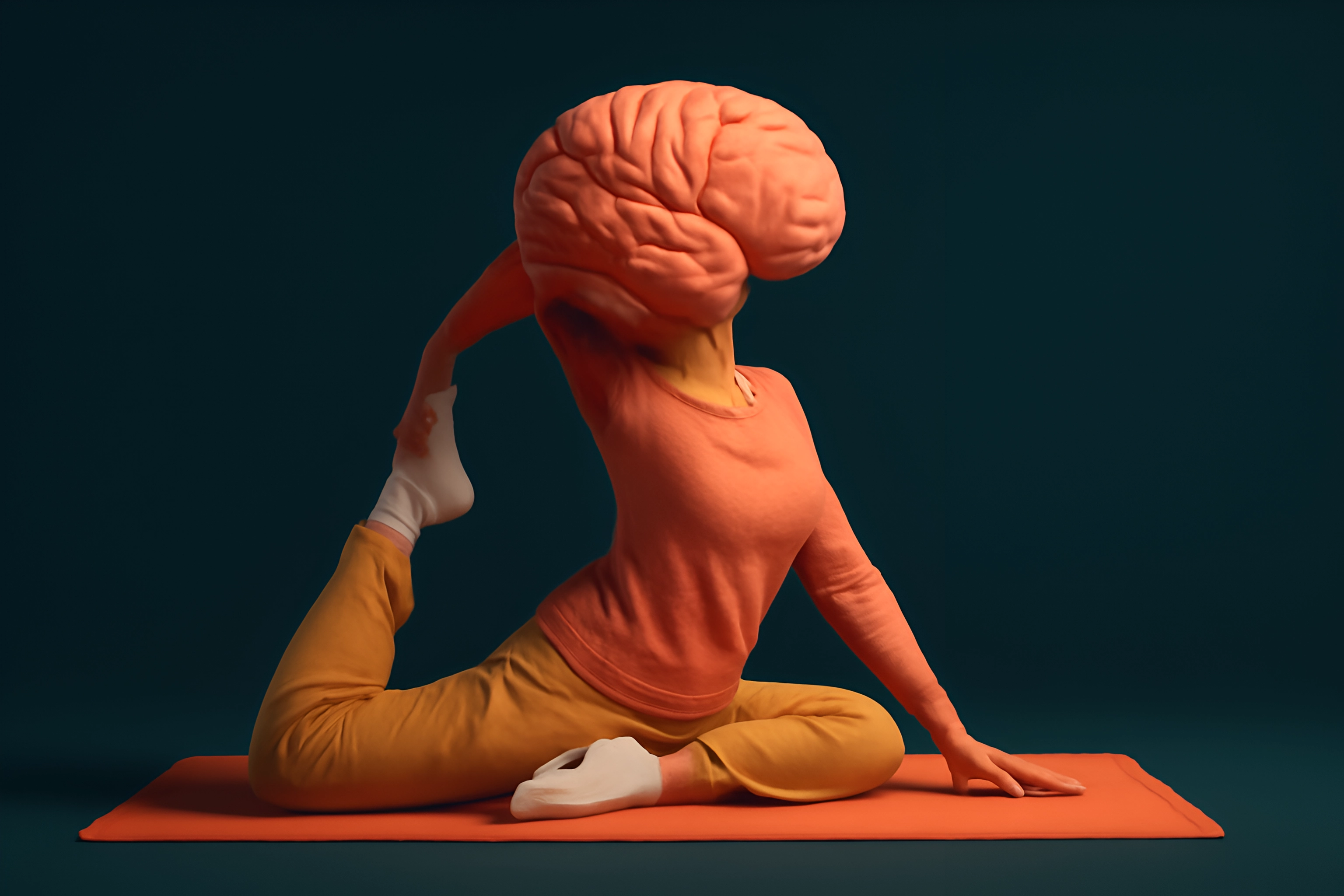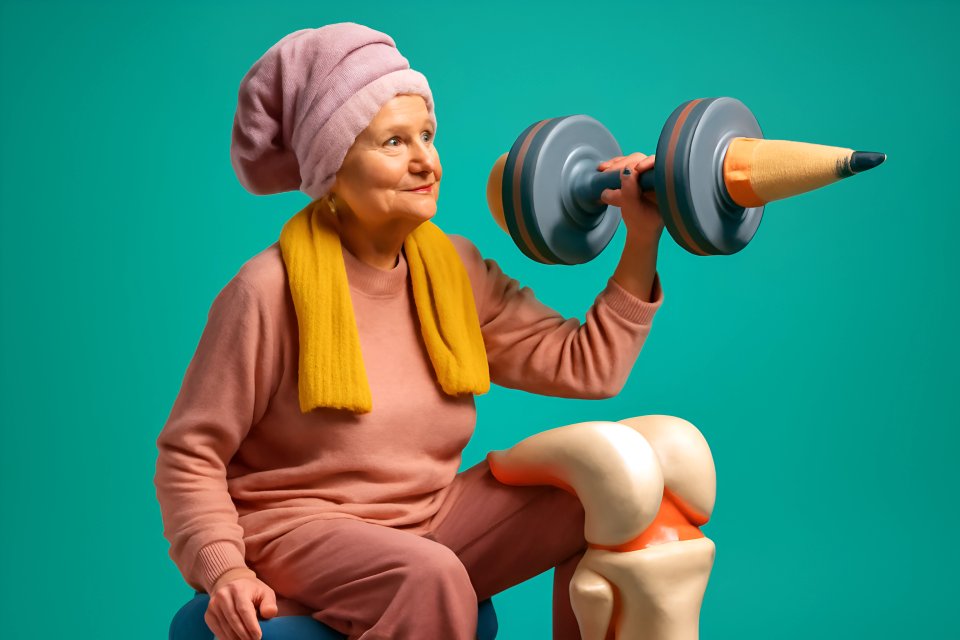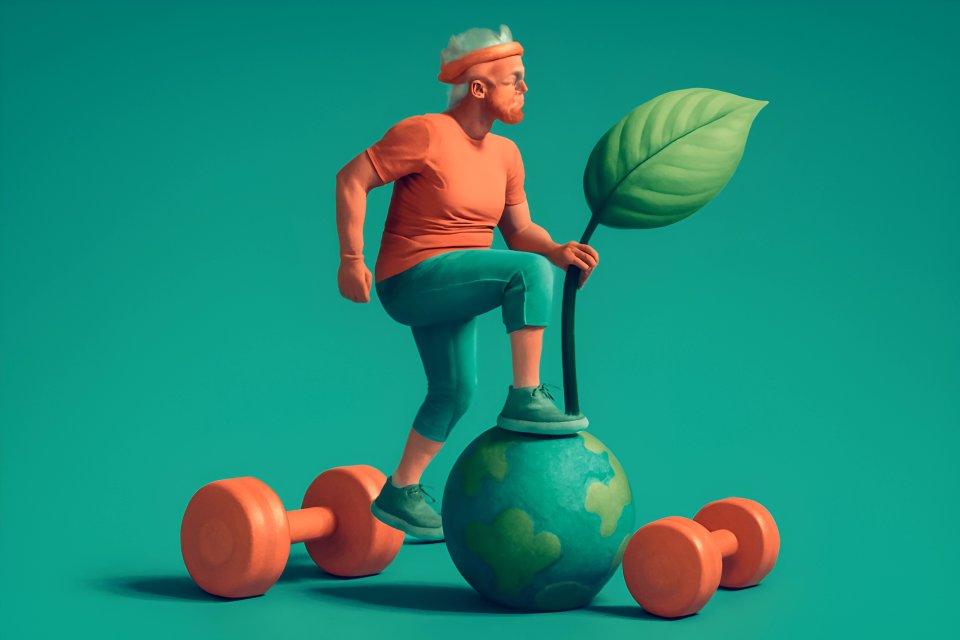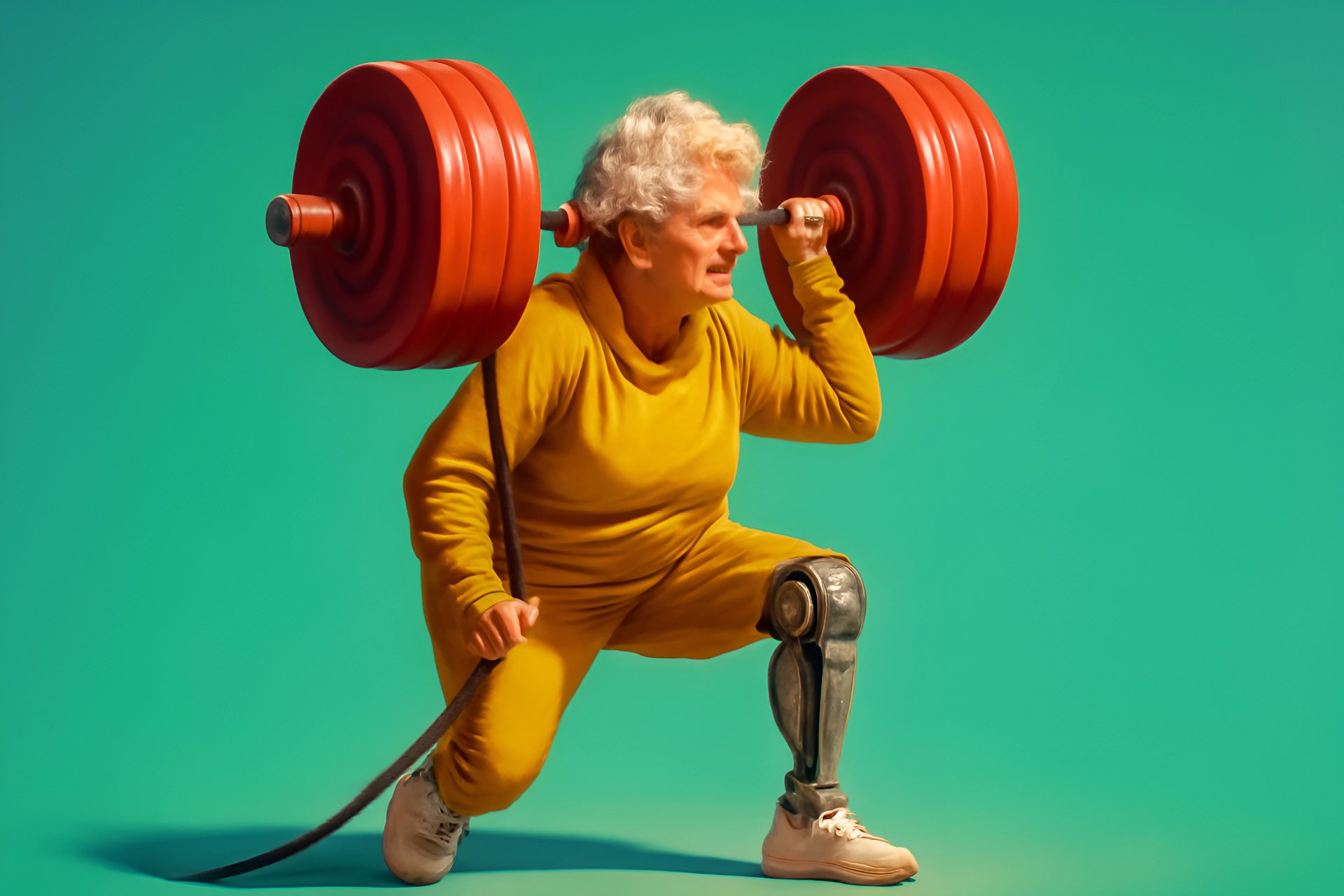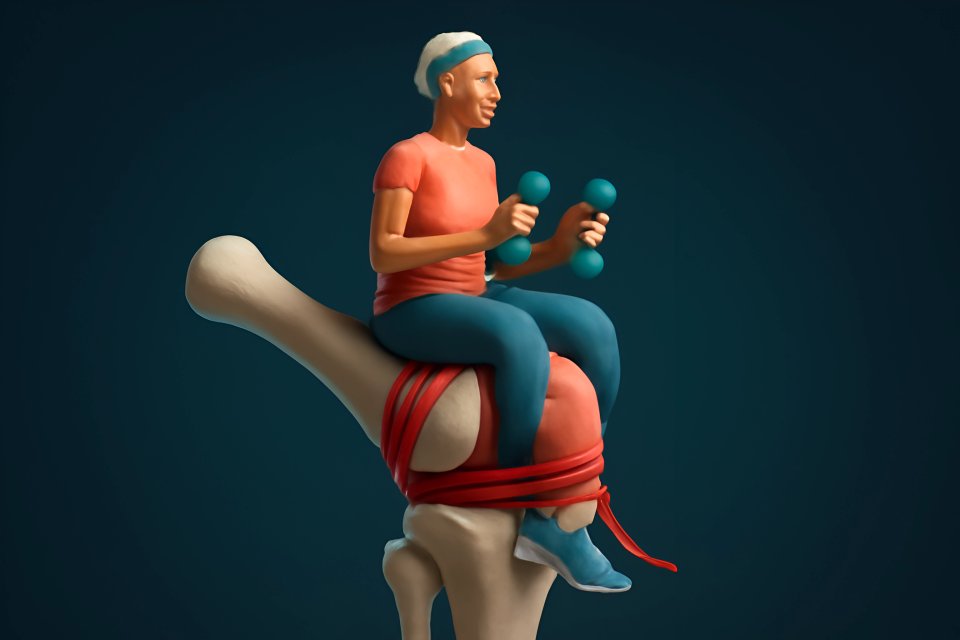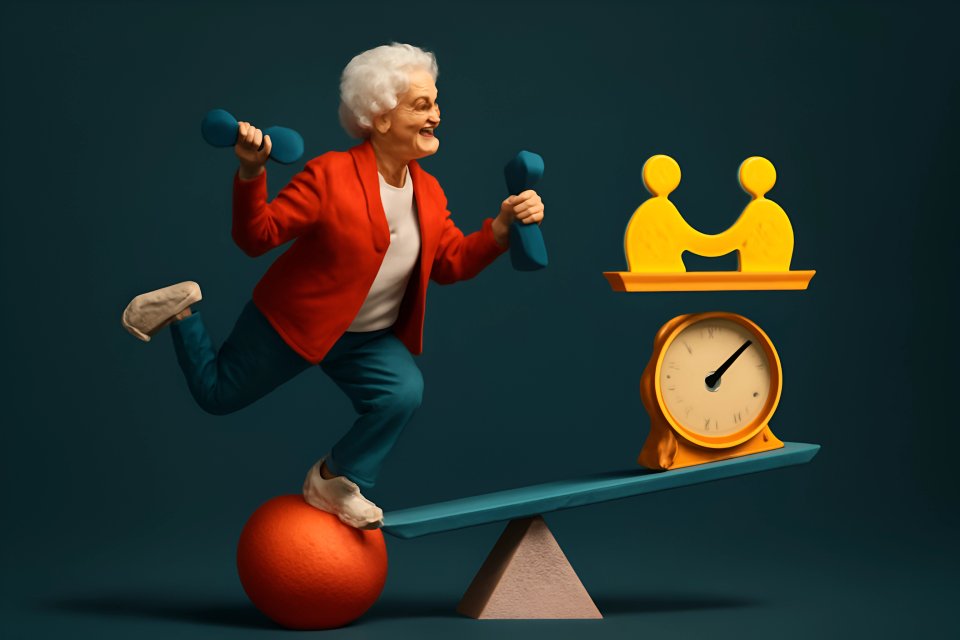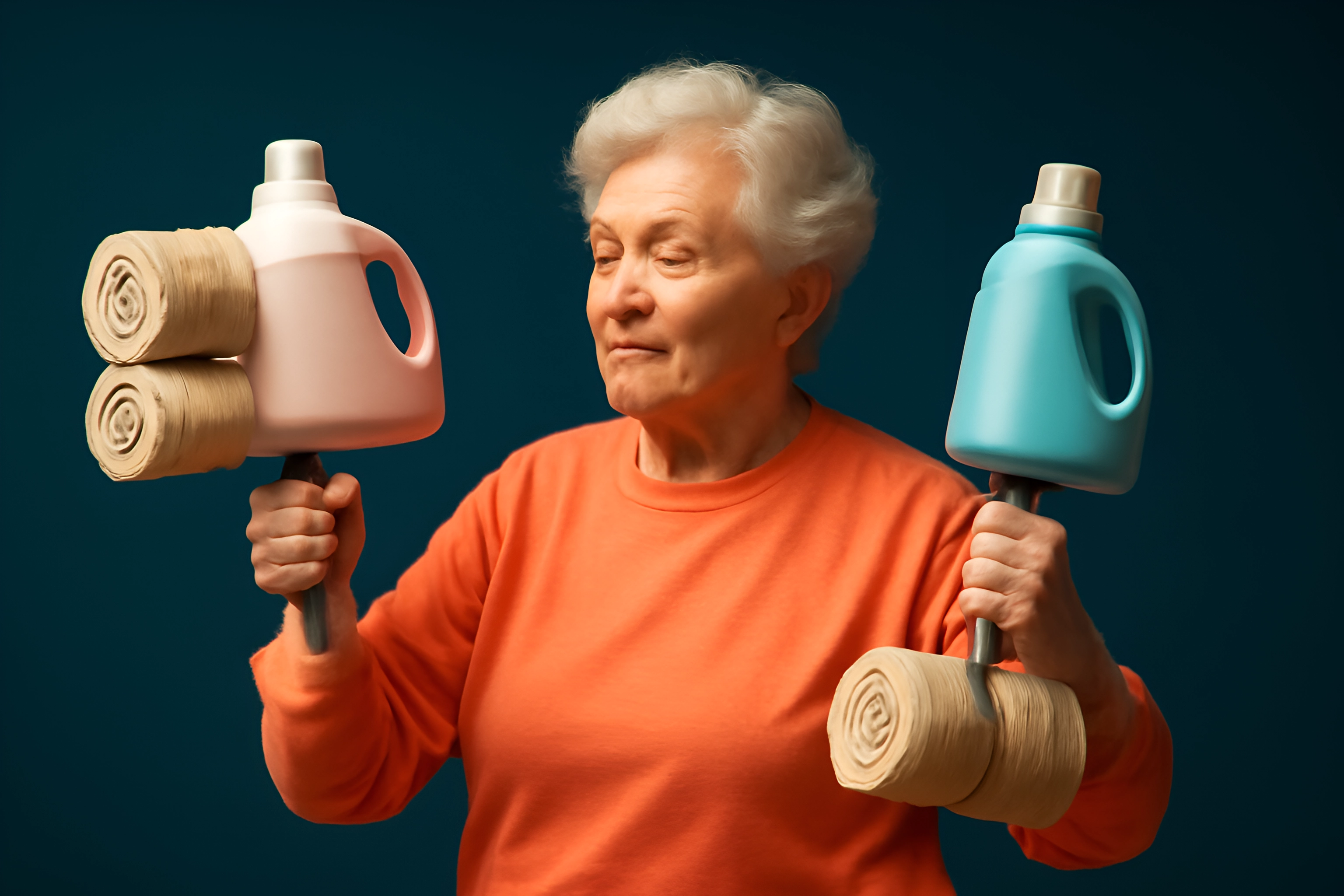
Your Home is Your New Gym
Think you need an expensive gym membership or a full rack of weights to stay strong and active after 50? Think again. The most powerful, accessible, and affordable fitness tools you'll ever need might already be hiding in your pantry, your closet, and your living room.
This isn't just another list of exercises; this is your blueprint for reclaiming your strength and independence on your own terms. We're going to transform everyday objects into your personal arsenal for building muscle, improving balance, and boosting your vitality. Forget the crowded gyms and complicated machines—your journey to a stronger, more confident you starts right here, with our guide to senior fitness at home.
The beauty of these improvised home workouts lies in their simplicity and creativity. It’s about proving that your environment doesn’t limit you; it empowers you. You have everything you need to take control of your health, fight back against age-related decline, and build a body that can carry you through life with energy and grace.
Why Low-Impact Resistance Training is a Game-Changer After 50
Let's be brutally honest. As we age, our bodies change. We face the unwelcome realities of muscle loss, decreased bone density, and a metabolism that seems to have slowed to a crawl. But what if I told you that you have a powerful weapon to fight back against every single one of these challenges?
That weapon is low-impact resistance training. According to health experts at HumanGood, low-impact exercises are essential for older adults because they build strength without putting dangerous strain on your joints. It’s not about lifting massive weights; it’s about applying consistent, controlled pressure to stimulate your muscles and bones, forcing them to adapt and grow stronger.
This isn't just about feeling strong—it's about survival and independence. It's about having the power to catch yourself before a fall, the stamina to play with your grandkids without getting winded, and the confidence to live life without limitations. This type of training is your key to unlocking a future filled with vitality.
- Builds and Maintains Muscle Mass: Directly combats age-related muscle loss, also known as sarcopenia, which is a primary cause of weakness and disability in older adults.
- Strengthens Bones: The tension from resistance training signals your body to build more bone tissue, helping to increase bone density and reduce the risk of osteoporosis.
- Improves Balance and Stability: Stronger muscles, particularly in your legs and core, are your first line of defense against falls, a major health risk for seniors.
- Boosts Metabolism: Muscle tissue burns more calories at rest than fat tissue, so building muscle helps support healthy weight management.
- Enhances Functional Fitness: This is the most important benefit of all—making daily life easier. Carrying groceries, climbing stairs, and getting up from a chair all become safer and require less effort.
Your At-Home Arsenal: 8 Household Items for a Full-Body Workout
Ready to go on a treasure hunt? Let's tour your home to find the perfect tools for your DIY resistance training for seniors. You'll be amazed at what you can accomplish with a little ingenuity.
Canned Goods or Water Bottles
These are your new dumbbells. Two cans of soup or two filled water bottles provide consistent, manageable weight for exercises like bicep curls, overhead presses, and seated rows. They are easy to grip and perfect for beginners.
A Sturdy Chair
This is your stability station. A solid, armless chair is essential for support during squats, a base for seated exercises, and a balance aid for leg lifts. Ensure it’s placed on a non-slip surface.
A Bath Towel or Scarf
This simple piece of fabric is a fantastic tool for creating isometric tension. By pulling the ends of a towel apart, you engage muscles in your back, shoulders, and arms without any external weight, making it incredibly safe and effective.
A Tote Bag or Reusable Grocery Bag
Welcome to your DIY kettlebell. Fill a sturdy tote bag with books, cans, or bags of rice to create a variable weight you can use for deadlifts, rows, and weighted marches. You can easily adjust the weight by adding or removing items.
A Bag of Rice or Flour (5-10 lbs)
For exercises that require a single, heavier weight, a 5 or 10-pound bag of rice or flour is perfect. Hug it to your chest during goblet squats to challenge your legs and core.
Stairs or a Sturdy Step-Stool
Your personal calf-strengthening machine. Use the bottom step of a staircase or a low, sturdy stool to perform calf raises, which are crucial for ankle stability and balance.
The Wall
The ultimate immovable object. A clear wall space is perfect for performing wall push-ups to build upper body strength without getting on the floor, and for wall sits to build incredible endurance in your legs.
A Book
A heavy hardcover book can serve as a light weight for core exercises. Holding it during seated twists adds just enough resistance to challenge your abdominal muscles.
The Ultimate Home Workout with No Equipment (Over 50 Edition)
Now that you’ve gathered your arsenal, it’s time to put it to work. This routine is designed to be a full-body, low-impact workout that you can do right in your living room. Remember to focus on slow, controlled movements—quality is always more important than quantity.
A Full-Body, Low-Impact Resistance Training Routine Using Household Items
A. Upper Body Strength
Seated Bicep Curls
Item(s) Needed: 2 Canned Goods or Water Bottles, 1 Sturdy Chair
Instructions:
- Sit tall at the edge of your chair, feet flat on the floor.
- Hold one can in each hand with your palms facing forward, arms hanging down by your sides.
- Slowly curl the cans up toward your shoulders, squeezing your bicep muscles.
- Pause at the top, then slowly lower the cans back to the starting position.
Focus: Strengthens the front of your arms.
Overhead Press
Item(s) Needed: 2 Canned Goods or Water Bottles, 1 Sturdy Chair
Instructions:
- Sit tall in your chair, holding one can in each hand at shoulder height, palms facing forward.
- Press the cans straight up overhead until your arms are fully extended but not locked.
- Slowly lower the cans back to shoulder height.
Focus: Strengthens your shoulders and upper back.
Wall Push-Ups
Item(s) Needed: A clear wall
Instructions:
- Stand facing a wall, about arm's length away.
- Place your palms flat on the wall at shoulder height and width.
- Keeping your body in a straight line, slowly bend your elbows and lean your chest toward the wall.
- Push back to the starting position.
Focus: Builds chest and arm strength safely.
Towel Pull-Aparts
Item(s) Needed: 1 Bath Towel
Instructions:
- Sit or stand tall, holding a rolled-up towel with both hands, palms facing down.
- Extend your arms straight out in front of you at shoulder height.
- Create tension by actively pulling the ends of the towel apart as if you're trying to rip it.
- While maintaining tension, squeeze your shoulder blades together. Hold for 3-5 seconds and release.
Focus: Strengthens the muscles of your upper back and improves posture.
B. Lower Body & Stability
Chair Squats
Item(s) Needed: 1 Sturdy Chair
Instructions:
- Stand in front of the chair with your feet shoulder-width apart.
- Keeping your chest up, slowly lower your hips back and down as if you are about to sit.
- Lightly tap the chair with your bottom, then push through your heels to stand back up.
Focus: Builds strength in your legs and glutes, essential for standing and walking.
Seated Leg Extensions
Item(s) Needed: 1 Sturdy Chair
Instructions:
- Sit tall at the edge of your chair, holding on to the sides for support.
- Slowly extend one leg straight out in front of you, squeezing the thigh muscle.
- Hold for a moment, then slowly lower your foot back to the floor. Repeat on the other side.
Focus: Strengthens the quadriceps (front of the thigh).
Glute Bridges
Item(s) Needed: A comfortable floor space
Instructions:
- Lie on your back with your knees bent and feet flat on the floor, hip-width apart.
- Place your arms by your sides with your palms down.
- Squeeze your glutes and lift your hips off the floor until your body forms a straight line from your shoulders to your knees.
- Hold for a moment, then slowly lower your hips back down.
Focus: Strengthens your glutes and lower back.
Calf Raises
Item(s) Needed: Stairs, a Step-Stool, or a clear floor space (hold onto a wall or chair for balance)
Instructions:
- Stand with the balls of your feet on the edge of a step, or flat on the floor.
- Slowly raise your heels as high as you can, pausing at the top.
- Slowly lower your heels back down.
Focus: Improves ankle strength and balance.
C. Core & Back Support
Seated Russian Twists
Item(s) Needed: 1 Book or a single can, 1 Sturdy Chair
Instructions:
- Sit tall on the edge of your chair, leaning back slightly to engage your core.
- Hold the book with both hands at your chest.
- Slowly twist your torso from side to side, moving the book across your body.
Focus: Strengthens your obliques and improves rotational core strength.
Tote Bag Deadlifts
Item(s) Needed: 1 Tote Bag filled with books or cans
Instructions:
- Place the tote bag on the floor between your feet.
- Hinge at your hips, keeping your back straight, and bend your knees to grip the bag's handles.
- Keeping your core tight and back flat, drive through your heels to stand up straight, lifting the bag.
- Slowly reverse the motion to lower the bag back to the floor.
Focus: Strengthens the entire back side of your body (hamstrings, glutes, and back).
Putting It All Together: Your Weekly Plan
A great workout is useless if it doesn't become a habit. The key to success is consistency, not intensity. To turn these exercises into a routine, you need a simple, sustainable plan.
Start by aiming for 2-3 workout sessions per week on non-consecutive days, which gives your muscles time to recover and grow stronger. For each exercise, aim for 8-12 repetitions. Begin with one full set of the routine and, as you feel more confident, build up to two or three sets. This approach to adaptive resistance training for seniors ensures you progress safely and effectively.
Finally, never skip your warm-up and cool-down. Before each session, spend five minutes marching in place and doing gentle arm circles to prepare your body for movement. After you're done, take another five minutes for gentle stretching to improve flexibility and aid recovery. This complete framework is key to building a sustainable low-impact exercise routine that serves you for years to come.
Safety First: Essential Tips for Your Home Workout
Your greatest asset is your health, and protecting it is our number one priority. Building strength is a marathon, not a sprint. Following these safety rules will ensure your home workout is both effective and injury-free.
As the National Institute on Aging advises, safety should always be your top concern. Before you lift a single can of soup, commit these principles to memory. They are your non-negotiable rules for a successful fitness journey.
- Consult Your Doctor: Always check with a healthcare professional before starting any new fitness program, especially if you have pre-existing health conditions.
- Listen to Your Body: This is the golden rule. Never push through sharp or sudden pain. Modify or stop an exercise if it doesn't feel right for you.
- Focus on Form: Slow, controlled movements are far more effective and safer than fast, jerky ones. It's better to do 5 perfect reps than 15 sloppy ones.
- Clear Your Space: Make sure your workout area is free of clutter, rugs, or any other tripping hazards.
- Stay Hydrated: Keep a glass of water nearby and sip it throughout your workout to stay hydrated and energized.
Conclusion: Strength and Vitality are in Your Hands
You don't need a fancy gym or expensive equipment to build a stronger, more resilient body. Everything you need—the tools, the space, and most importantly, the determination—is already within your reach. Your strength and vitality are truly in your hands.
Embracing low-impact resistance training using household items is more than just a workout; it's a declaration of your independence and a powerful commitment to aging with strength and dignity. You have the power to build a body that supports the life you want to live.
What's your favorite household item to use for exercise? Share your own creative ideas in the comments below!
For more practical fitness guides and wellness tips designed specifically for you, subscribe to the FitOverFifty newsletter and take the next step on your journey to lifelong vitality.







